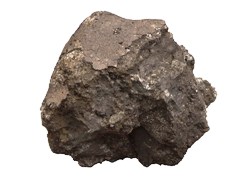
The CI carbonaceous chondrites (I is after Ivuna, because the "O" of the first, Orgueil, which fell in France in 1864
1, could not be used as it would duplicate the CO type usage for Ornans fall, France 1868) are of critical importance for research on the solar system. They are the most primitive material from asteroids that reaches us, and only five are known, with the exception of three unconfirmed reports from Antarctica,
2 (and these would have suffered some surface weathering even in Antractica) and one of the five, Revelstoke, Canada, weighs only about 1 gram! Ivuna is one of two stones that fell on the west shore of Lake Rukwa, Tanzania, in 1938. New hi-tech methods of exploration of meteorites appear regularly, and most of these are non-destructive. This purchase will provide material for such research for years to come.
It is also an invaluable addition to the Museum’s already excellent display collection.
Refs:
- McCall,GJH. The Orgeueil meteorite fraud. Geoscientist 16(1); 6-7,10,11
- Kojima, H. 2005. The history of Japanese Antarctic meteorites. In McCall. GJH, Bowden, AJ, Howarth, RJ, eds., The History of Meteoritics and Key Meteorite Collections”. SP256 Geological Society,London; 291-303